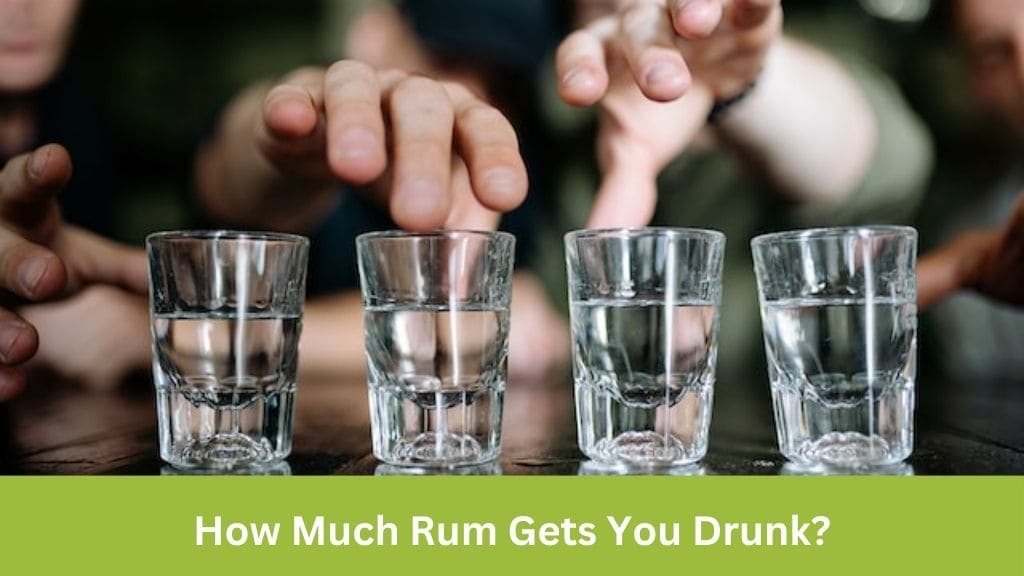Rum, with its rich history and diverse flavors, is a beloved spirit enjoyed by many around the world. However, like any alcoholic beverage, it’s essential to understand its effects on the body and know how much is safe to consume. In this comprehensive guide, we’ll delve into the factors that determine how much rum gets you drunk, providing valuable insights and tips for responsible drinking.
What is Rum?
Rum is a type of distilled alcoholic beverage made from sugarcane byproducts, such as molasses or sugarcane juice. It is typically aged in oak barrels, which impart distinct flavors and characteristics to the final product. Rum originated in the Caribbean during the 17th century and has since become a popular spirit enjoyed worldwide.
The production process of rum involves several steps, beginning with the fermentation of sugarcane-derived substances. Yeast is added to the fermenting liquid, converting sugars into alcohol. The resulting mixture is then distilled to separate alcohol from impurities, resulting in a high-proof spirit.
After distillation, rum is often aged in wooden barrels, where it undergoes maturation and develops its unique flavor profile. The aging process can vary significantly depending on the type of rum and the desired characteristics of the final product. Some rums are aged for just a few years, while others may be aged for decades to achieve complexity and depth of flavor.
Rum comes in various styles and classifications, ranging from light and clear to dark and richly flavored. Common types of rum include white or silver rum, gold or amber rum, and dark or aged rum. Each type has its own distinct taste and aroma, making rum a versatile spirit for mixing cocktails or enjoying neat or on the rocks.
In addition to its use in cocktails, rum is also enjoyed as a sipping spirit and is often paired with foods that complement its flavors, such as tropical fruits, chocolate, or spicy dishes. Overall, rum holds a rich cultural significance and continues to be celebrated for its diverse range of flavors and its role in cocktail culture.
Understanding Alcohol by Volume (ABV)

Alcohol by Volume (ABV) is a standard measure used to quantify the amount of alcohol (ethanol) present in a beverage. For rum, ABV levels typically range from 40% to over 60%, depending on the type and brand. The higher the ABV, the stronger the alcoholic content of the rum.
Effects of ABV on Intoxication
- Higher ABV: Rums with higher ABV levels tend to lead to faster intoxication due to their increased alcohol concentration. Overproof rums, with ABV levels exceeding 60%, should be consumed with caution as they can have potent effects on the body.
- Standard ABV: Most commercially available rums have a standard ABV of around 40%, requiring a moderate intake to achieve intoxication.
Factors Affecting Alcohol Tolerance

Several factors influence how much rum it takes to get drunk, including:
Age, Sex, and Body Weight
- Metabolism: Metabolic rates tend to decline with age, meaning older individuals may metabolize alcohol more slowly, leading to increased alcohol sensitivity.
- Body Composition: Men generally have higher muscle mass and lower body fat than women, resulting in faster alcohol metabolism. As a result, women typically have lower alcohol tolerance compared to men of the same weight.
- Body Weight: Heavier individuals often have a larger volume of body water, which dilutes alcohol and leads to lower blood alcohol concentrations (BACs) per drink. Consequently, heavier individuals may require more alcohol to feel intoxicated compared to lighter individuals.
Alcohol Consumption Patterns
- Tolerance Development: Regular alcohol consumption can lead to the development of tolerance, where the body becomes accustomed to higher levels of alcohol and requires larger amounts to achieve the same effects.
- Binge Drinking: Episodes of binge drinking, characterized by consuming large quantities of alcohol in a short period, can lower alcohol tolerance and increase the risk of alcohol-related harm.
Medication and Drug Use
- Interactions: Certain medications and drugs can interact with alcohol, amplifying its effects and increasing the risk of adverse reactions.
- Health Conditions: Individuals with underlying health conditions should exercise caution when consuming alcohol, as it may exacerbate symptoms or interfere with medication effectiveness.
Genetics
- Enzyme Variations: Genetic factors play a role in alcohol metabolism, with variations in genes encoding alcohol-metabolizing enzymes influencing individual responses to alcohol. For example, some individuals may have genetic variants that result in faster alcohol metabolism, leading to higher alcohol tolerance.
- Family History: Family history of alcoholism or alcohol-related disorders can also impact alcohol tolerance, as genetic predispositions may affect how individuals respond to alcohol.
Health Conditions and Medications
- Liver Function: Liver health is crucial for alcohol metabolism, as the liver is responsible for breaking down alcohol in the body. Liver diseases or conditions that impair liver function can decrease alcohol tolerance and increase the risk of alcohol-related complications.
- Medication Interactions: Certain medications can interact with alcohol, either potentiating its effects or causing adverse reactions. It’s essential to consult healthcare professionals about potential interactions between medications and alcohol.
Emotional and Environmental Factors
- Stress and Emotional State: Emotional factors such as stress, anxiety, or depression can influence alcohol tolerance and response. Individuals may be more susceptible to the effects of alcohol when experiencing heightened emotional states.
- Environmental Factors: Environmental factors, such as drinking environment, social cues, and peer pressure, can impact alcohol consumption patterns and tolerance levels. Drinking in social settings or in response to external cues may lead to higher alcohol intake and lower tolerance.
Tips for Responsible Drinking
Tips for responsible drinking encompass a range of strategies and behaviors aimed at promoting safe and moderate alcohol consumption while minimizing the risk of negative consequences. These tips prioritize personal health, safety, and well-being, helping individuals make informed decisions about alcohol intake. Here’s a deeper exploration of key tips for responsible drinking:
Moderation is Key
- Know Your Limits: Understand your personal tolerance to alcohol and set reasonable limits for consumption based on factors such as age, sex, body weight, and overall health.
- Monitor Intake: Keep track of the number of drinks consumed and pace yourself accordingly to avoid overconsumption and intoxication.
Stay Hydrated and Nourished:
- Alternate with Water: Drink water between alcoholic beverages to stay hydrated and help mitigate the dehydrating effects of alcohol.
- Eat Before Drinking: Consume a balanced meal rich in proteins and carbohydrates before drinking to slow down alcohol absorption and reduce its impact on the body.
Plan Ahead and Seek Support:
- Designated Driver: Plan transportation in advance, ensuring that at least one person remains sober to drive or arrange for alternative transportation options.
- Buddy System: Drink with trusted friends or family members who can help monitor your alcohol intake and provide support if needed.
Know When to Stop:
- Listen to Your Body: Pay attention to how alcohol affects your body and recognize signs of intoxication, such as slurred speech, impaired coordination, or memory lapses.
- Trust Your Instincts: If you feel uncomfortable or unsafe, trust your instincts and stop drinking or seek assistance from others.
Avoid Peer Pressure:
- Set Boundaries: Establish personal boundaries regarding alcohol consumption and stick to them, even in social settings where peer pressure may be present.
- Respect Others’ Choices: Respect the choices of others regarding alcohol consumption and refrain from pressuring them to drink more than they’re comfortable with.
Seek Help if Needed:
- Know Where to Turn: If you’re struggling with alcohol use or dependence, seek help from healthcare professionals, support groups, or counseling services.
- Prioritize Self-Care: Focus on self-care and seek support from friends, family, or mental health professionals to address underlying issues contributing to unhealthy drinking habits.
Stay Informed and Educated:
- Learn About Alcohol: Educate yourself about the effects of alcohol on the body, as well as risk factors for alcohol-related harm, to make informed decisions about consumption.
- Stay Updated: Stay informed about responsible drinking guidelines, health recommendations, and resources available for support and assistance.
Conclusion
In conclusion, understanding how much rum gets you drunk involves considering various factors, including alcohol by volume, individual characteristics, and responsible drinking practices. By being aware of these factors and exercising moderation, you can enjoy rum responsibly while minimizing the risks associated with excessive alcohol consumption. Remember to prioritize your health and safety when indulging in alcoholic beverages, and always drink responsibly. Cheers!
I’m Chen Mina, from Vol de Nuit, who has a special passion for bartending, especially mixing wine, beer, and cooktail. Here you will find content about alcoholic beverages, I will bring you knowledge that few people know about this drink.





